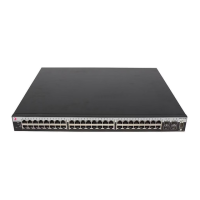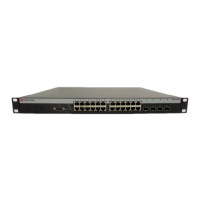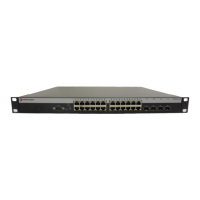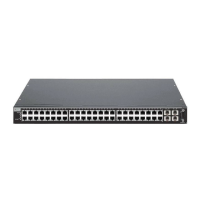Configuring DVMRP
SecureStack C2 Configuration Guide 17-31
Defaults
None.
Mode
PrivilegedEXEC:C2(su)‐>router#
Example
ThisexampleshowshowtoresetOSPFprocess1:
C2(su)->router#clear ip ospf process 1
Configuring DVMRP
Purpose
ToenableandconfiguretheDistanceVectorMulticastRoutingProtocol(DVMRP)onaninterface.
DVMRProutesmulticasttrafficusingatechniqueknownasReversePathForwarding.Whena
routerreceivesapacket,itfloodsthepacketoutofallpathsexcepttheonethatleadsbacktothe
packet’s source.Doing
soallowsadatastreamtoreachallVLANs(possiblymultipletimes).Ifa
routerisattachedtoasetofVLANsthatdonotwanttoreceivefromaparticularmulticastgroup,
theroutercansenda“prune”messagebackupthedistributiontreetostopsubsequentpackets
from
travelingwheretherearenomembers.DVMRPwillperiodicallyrefloodinordertoreach
anynewhoststhatwanttoreceivefromaparticulargroup.
Commands
ip dvmrp
UsethiscommandtoenabletheDVMRPprocess.Thenoformofthiscommanddisablesthe
DVMRPprocess:
* Advanced License Required *
DVMRP is an advanced routing feature that must be enabled with a license key. If you have purchased an
advanced license key, and have enabled routing on the device, you must activate your license as described
in “Activating Licensed Features” on page 15-3 in order to enable the DVMRP command set. If you wish to
purchase an advanced routing license, contact Enterasys Networks Sales.
Note: IGMP must be enabled on all VLANs running DVMRP, and must also be globally enabled
on the SecureStack C2. For details on enabling IGMP, refer to Chapter 11.
For information about... Refer to page...
ip dvmrp 17-31
ip dvmrp enable 17-32
ip dvmrp metric 17-32
show ip dvmrp 17-33

